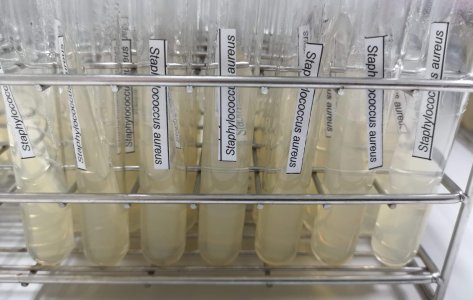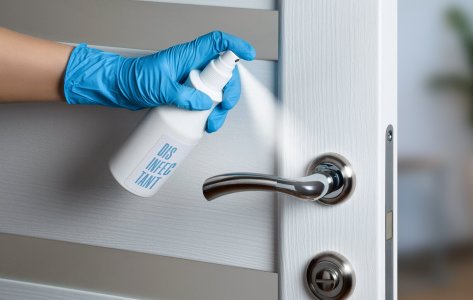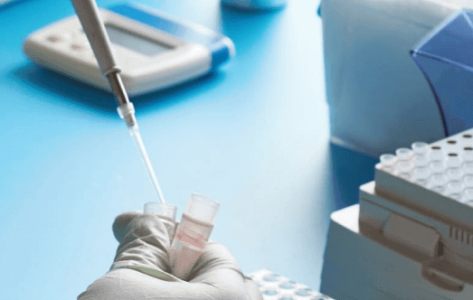- Swiss testing laboratory
ASTM E2315
Assessment of Antimicrobial Activity Using a Time-Kill Procedure

Hassle-free testing experience
Need to get a product tested? No worries! To and fro logistics are on us; we collect your products, test them and, deliver them back to you.
Related tests for you
Quick understanding of the test
ASTM E2315: 2016 - Standard Test Method for Time-Kill Antimicrobial Activity
- Pseudomonas aeruginosa (ATCC 15442)
- Staphylococcus aureus (ATCC 6538)
- Candida albicans (ATCC 10231)
- Aspergillus brasiliensis (ATCC 16404)
- Microbial suspension is prepared and standardized.
- The test sample is mixed with the microbial suspension under defined conditions.
- At predetermined time intervals, a small amount of test mixture is collected and neutralized.
- Surviving microorganisms are quantified via plate counting.
- Microbial reduction over time is analyzed and recorded.
- This test quantitatively measures how effectively an antimicrobial agent reduces microbial populations over time, essential for gauging its kill rates against bacteria, fungi, and other pathogens.
- This test is crucial for developers of antimicrobial products, as it provides essential data that can influence formulation adjustments before market release
Turnaround Time
Passing criteria
Do you have a product that needs testing?
Abstract
ASTM E2315 provides a standardized guide to evaluate the antimicrobial activity of test materials using a time-kill procedure. The method measures the reduction in a population of microorganisms after exposure to an antimicrobial substance for defined time intervals. It offers a flexible and reproducible approach to assess the performance of disinfectants, sanitizers, preservatives, and other antimicrobial agents under laboratory conditions.
Products tested using ASTM E2315 test method
This test method can be used to determine the antimicrobial efficacy of various products:
- Antibacterial liquid soaps
- Mouthwashes
- Disinfectants
- Hand sanitizers
- Surgical scrubs
- Other liquid antimicrobial formulations
ASTM E2315 test conditions and requirements
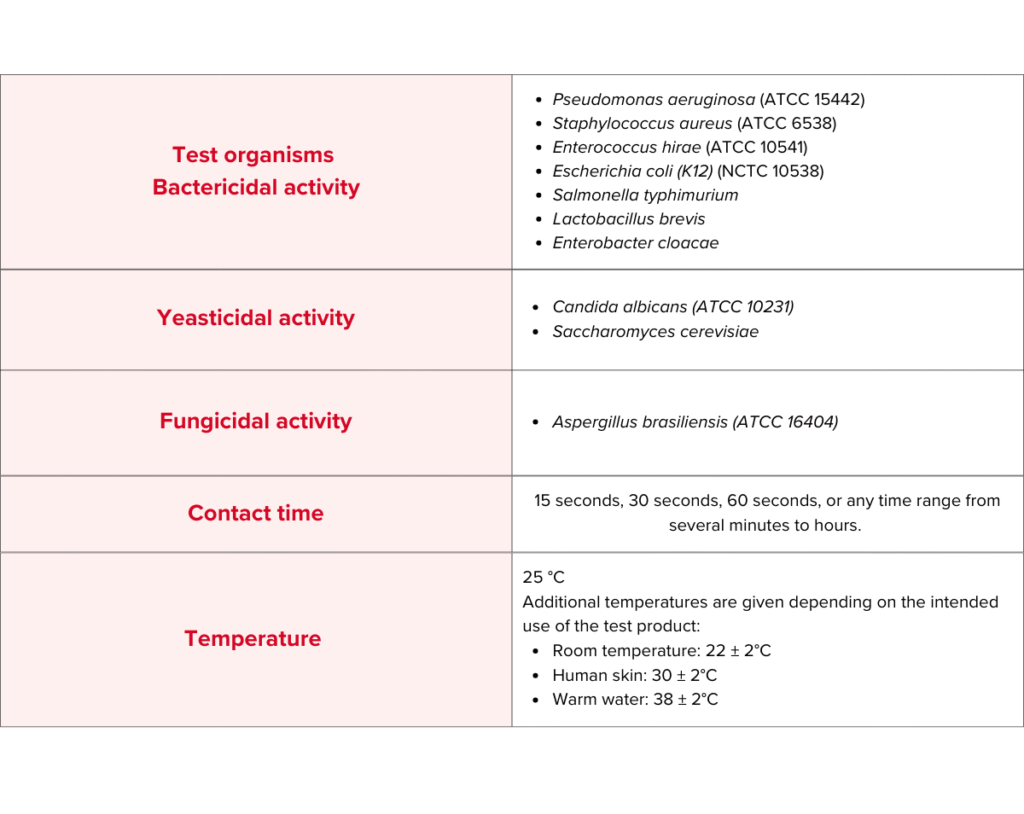
ASTM E2315 test methodology
Inoculum preparation
- For bacteria, 24-hour-old cultures cultivated in nutrient broth are used for the experiment. For fungi, spore preparation from a saline wash can be used.
Inoculation and neutralization
- The inoculum suspension (usually 1/10 of the product volume) is mixed with the test material, ensuring uniform dispersion.
- At predetermined time intervals (e.g., 30 seconds, 60 seconds), aliquots (typically 1 ml) are removed from the test mixture and neutralized to quench the antimicrobial activity of the test product.
- To determine the initial microbial concentration, a saline control is inoculated with the same test microbes.
Incubation
- The number of viable organisms from appropriate dilutions is enumerated using the spread plate or pour-plate technique.
- The plates are then incubated for 24-48 hours at a specified temperature.
Enumeration
- The microbial population is enumerated and expressed in terms of CFU/mL.
- The initial and final counts in the microbial population are compared to determine the log10 reduction and percent reduction.
Strengths of Time-kill test
The strengths of the time kill test method include its ability to:
- Provide quantitative data on antimicrobial efficacy.
- Assess a wide range of microorganisms and products.
- Offer reproducible and standardized results.
- Support compliance with regulatory requirements.
Limitations of Time-kill test
- ASTM E2315 is in vitro time-kill study, so results may not fully represent real-world environment or product use.
- Microorganisms that require special nutrients or incubation conditions may produce results that can’t be directly compared to organisms grown without those conditions.
- Assesses antimicrobial activity in liquid suspensions, not on solid surfaces, fabrics, or complex materials.
Conclusion
At Microbe Investigations Switzerland, we assist our customers in identifying the antimicrobial efficacy of their products. Our highly qualified microbiologists follow systematic testing procedures in accordance with ASTM E2315 guidelines. Equipped with top-notch instruments and advanced facilities, our labs ensure a meticulous antimicrobial evaluation process by significantly reducing the likelihood of errors.
To schedule a consultation or learn more about ASTM E2315 testing, please contact us here.
Frequently Asked Questions

DR. Martinoz Scholtz
Log reduction is quantified as the degree of reduction of microbial population. The higher the log reduction value, the greater the effectiveness of the antimicrobial product in killing or inhibiting microbial growth.
Antibacterial liquid soaps, mouthwashes, disinfectants, hand sanitizers, surgical scrubs and other liquid antimicrobial formulations.
Yes, the time kill test can be tailored to test a variety of microbial strains, including bacteria, fungi, and yeasts.
No, this standard is not applicable for food safety testing. It mainly deals with testing antimicrobial products that include disinfectants, sanitizers, hand washes and others.
Neutralizers are used at fixed intervals of time for example 30 seconds, 1 minute, to stop the antimicrobial activity of the test product.
Some common difficulties in carrying out the time kill test procedure are choosing appropriate neutralizers, having consistent microbial inoculum, and simulating real-world conditions during the test.
Meet the best of the blend of
R&D, Efficacy Testing,
Innovation and Passionate
Experts at MIS.



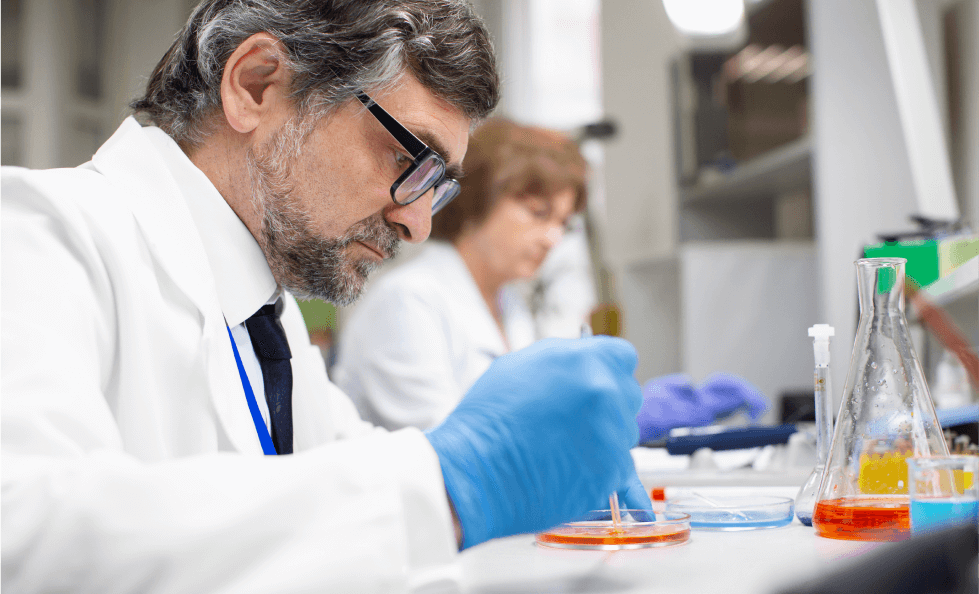
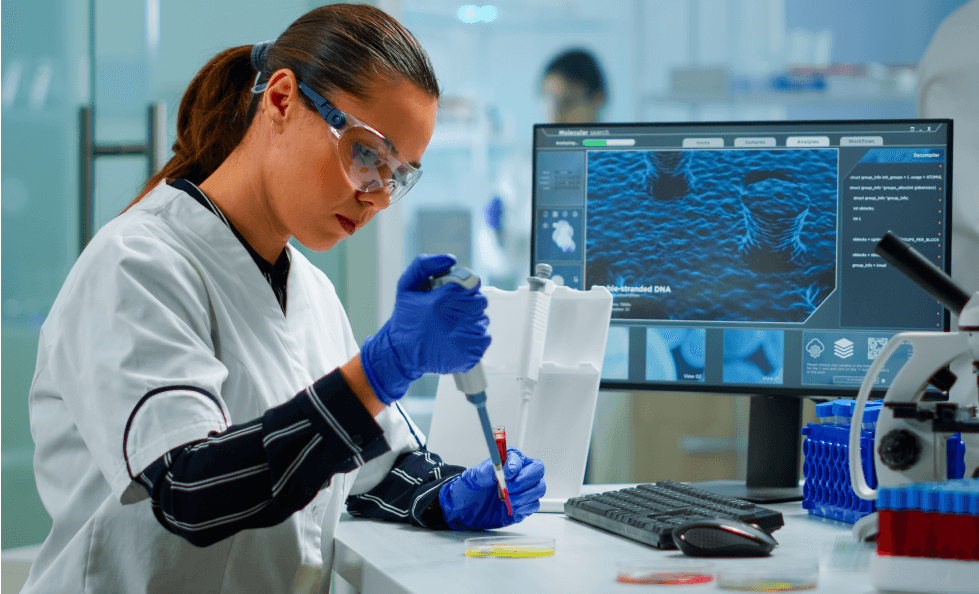
Explore More
Did you know there are
Antibacterial testing of disinfectants plays
Antimicrobial testing is important to
Let’s face it, we are
